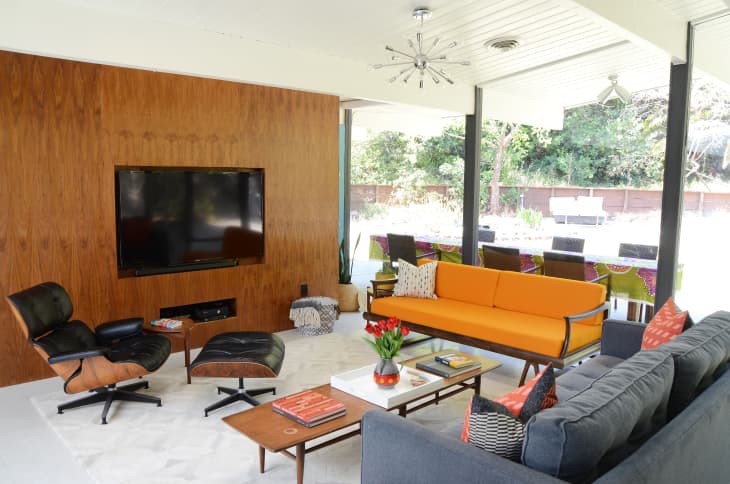What Does Mid-Century Modern Really Mean?
“Mid-century modern,” or MCM as I’m going to abbreviate it here for the sake of space, has been hot now for a while. But it occurred to us—well, maybe some present design-savvy Apartment Therapy readers excluded—that a lot of people’s exposure to this style might be limited to Mad Men reruns (RIP Megan and Don’s rad NYC pad) and Eames chairs. So we thought we’d put together a very high-level overview on the mid-mod movement and provide a little insight on what makes a piece authentically MCM for those of you out there who might be curious.
The first issue that arises when talking about “mid-century modern” is that there’s not an exact date for when the movement began and ended. Generally, critics and historians today agree that you can lump architecture, furniture, graphic design, and industrial design under this stylistic umbrella, but some believe the movement kicked off in the 1940s and lasted until the late 1960s/early 1970s. Others see true MCM design as tighter in scope, more toward the center of that range. Another part of the problem is that it’s not like Eero Saarinen created the Tulip Chair and declared it “mid-century modern.” The term was solidified much later, in the 1980s, when the writer Cara Greenberg finished a book on 1950s furniture and needed something catchy to call it. Modern? Check. Mid-century? Yep, right smack in the middle of the 20th century to be exact.
MCM has its roots in the Bauhaus and International movements, when many great architects and designers were fleeing Europe during and post-World War II. Slowly but surely, architects and designers here began to strip away the excess in their work, boiling things down to their true essence. Form started following function, and for the first time, that was enough.
So what makes “mid-century modern” modern in layman’s terms? Clean lines, simple shapes, and an embrace of new materials, including plastic, which was starting to gain traction for its own beneficial attributes. MCM was anti-ornamentation for the sake of ornamentation—there’s nothing super formal or frilly about it. And yet, authentic pieces are truly beautiful in their simplicity and the way they showcase and acknowledge their raw materials (rather than making them seem as if they are something else). Think streamlined sofas with simple tapered wood legs, plastic shell chairs, plain-front cabinets—easy-care pieces for kicking back and lounging rather than perching all proper in your parlor, Stepford Wife style. In some ways, MCM was the start of the practical “comfort is king” idea. I mean, just take a look at architect and designer George Nelson’s Marshmallow Sofa. If the name doesn’t say it all, the design, which consists of a collection of pillowy cushions that can be removed to clean and rotated for equal wear, only furthers this case.
Speaking of George Nelson, it was under his tutelage as director of design that the Herman Miller brand gave rise to a bulk of what’s now considered authentically Mid-Century Modern furniture. Of course, there were other brands creating similar styles (Knoll, for one, where Bertoia and Saarinen created major MCM pieces that are still sold today). But Nelson, in addition to designing modern icons like the Bubble Lamps, brought true revolutionaries including Noguchi, the Eames, Girard and more into the fold at Herman Miller, resulting in some of the most famous pieces of furniture of 20th century, from the Eames Lounge Chair and Ottoman to the Noguchi Table.
The MCM market is splintered today, between super pricey originals that were created by those aforementioned design houses (and other less prominent ones) during the actual time period to reissues from those same heritage brands today and knock-off reproductions. And of course, there are new designs today from stores that are in the style of MCM and heavily influenced by its design tenants.
Why is furniture from 50 to 70 years ago still resonating in today’s interiors? Well, for starters, there’s always an appreciation for vintage in any design community, and cultural trends tend to be cyclical. Seventies fashion is hot again, so why not MCM furniture, too? On top of that, authentic mid-mod pieces, at their best, were practical, durable, comfortable, and timeless. Isn’t that something we can all get behind as consumers? And for that reason, I don’t see “mid-century modern” going anywhere for awhile. And if it does lose a little of its freshness, it’ll inevitably come back once again for the same reasons.
